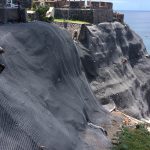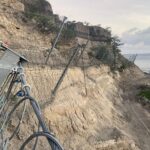
Tensioned mesh for cliff and slope protection
Preventing Rockfall with Tensioned Mesh
What is Tensioned Mesh?
Tensioned mesh is an active surface protection system designed to prevent the fall of stones and moderately sized blocks (up to 500 liters). Unlike draped mesh, it actively confines and stabilizes rock instabilities in their natural position through a network of strategically placed anchors.
- Fixation: The mesh is anchored at the top of the slope, set back at least 3 meters from the crest.
- Tensioning: Anchors, typically spaced at 1 anchor per 9 m² of mesh, secure and tighten the mesh firmly against the rock face.
- Adaptability: The number of anchors is adjusted based on the terrain’s characteristics and specific needs.

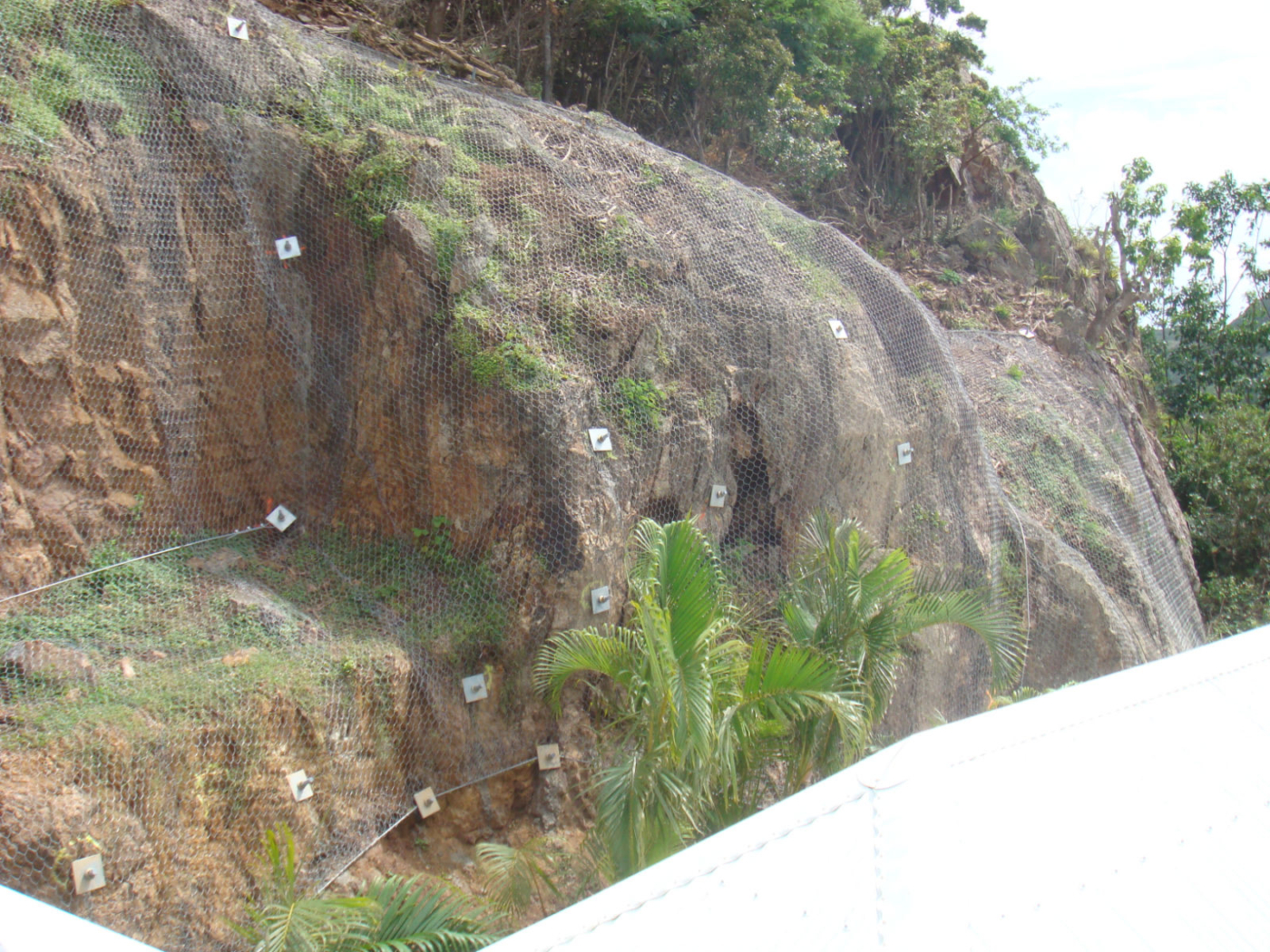

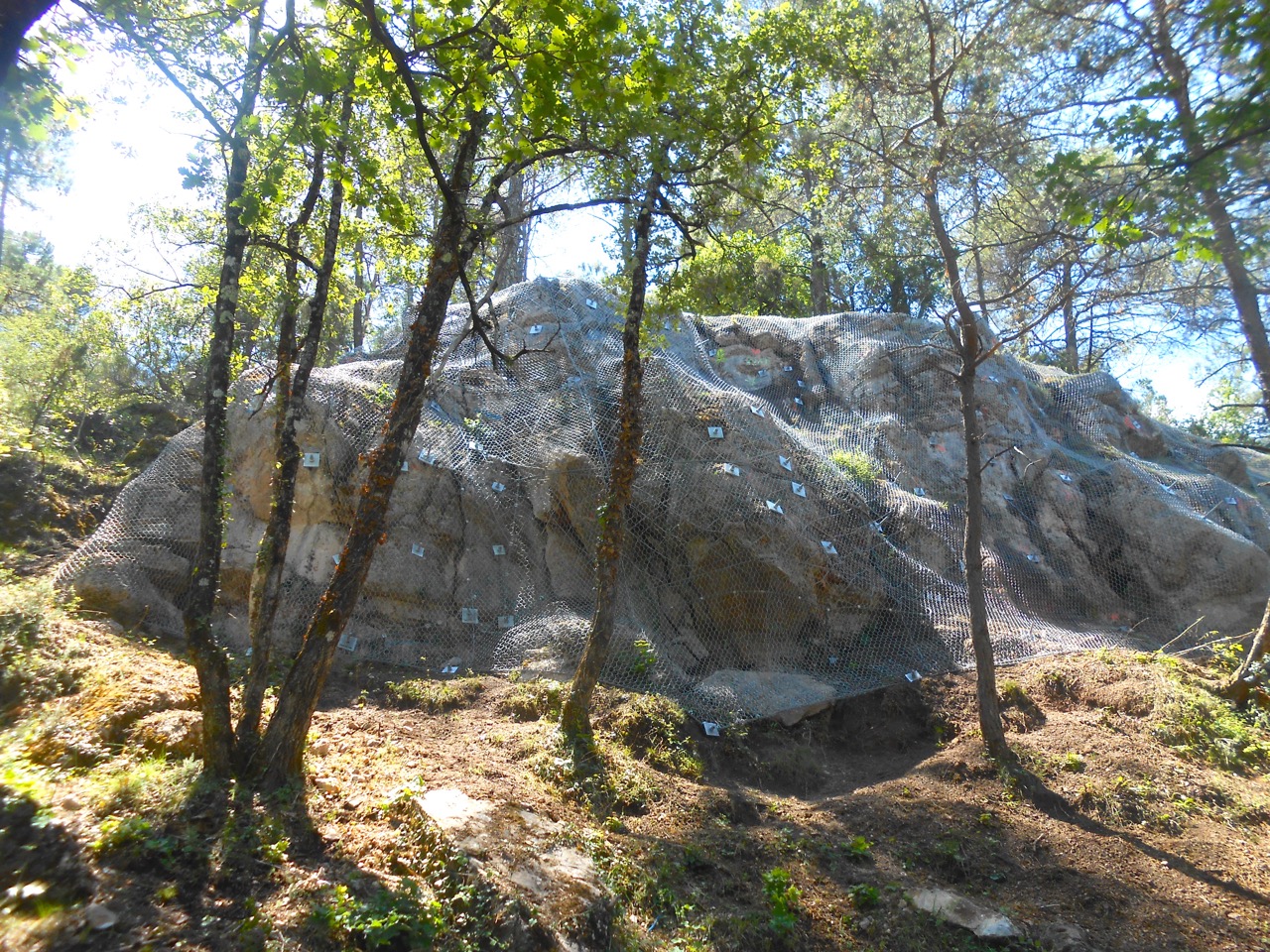

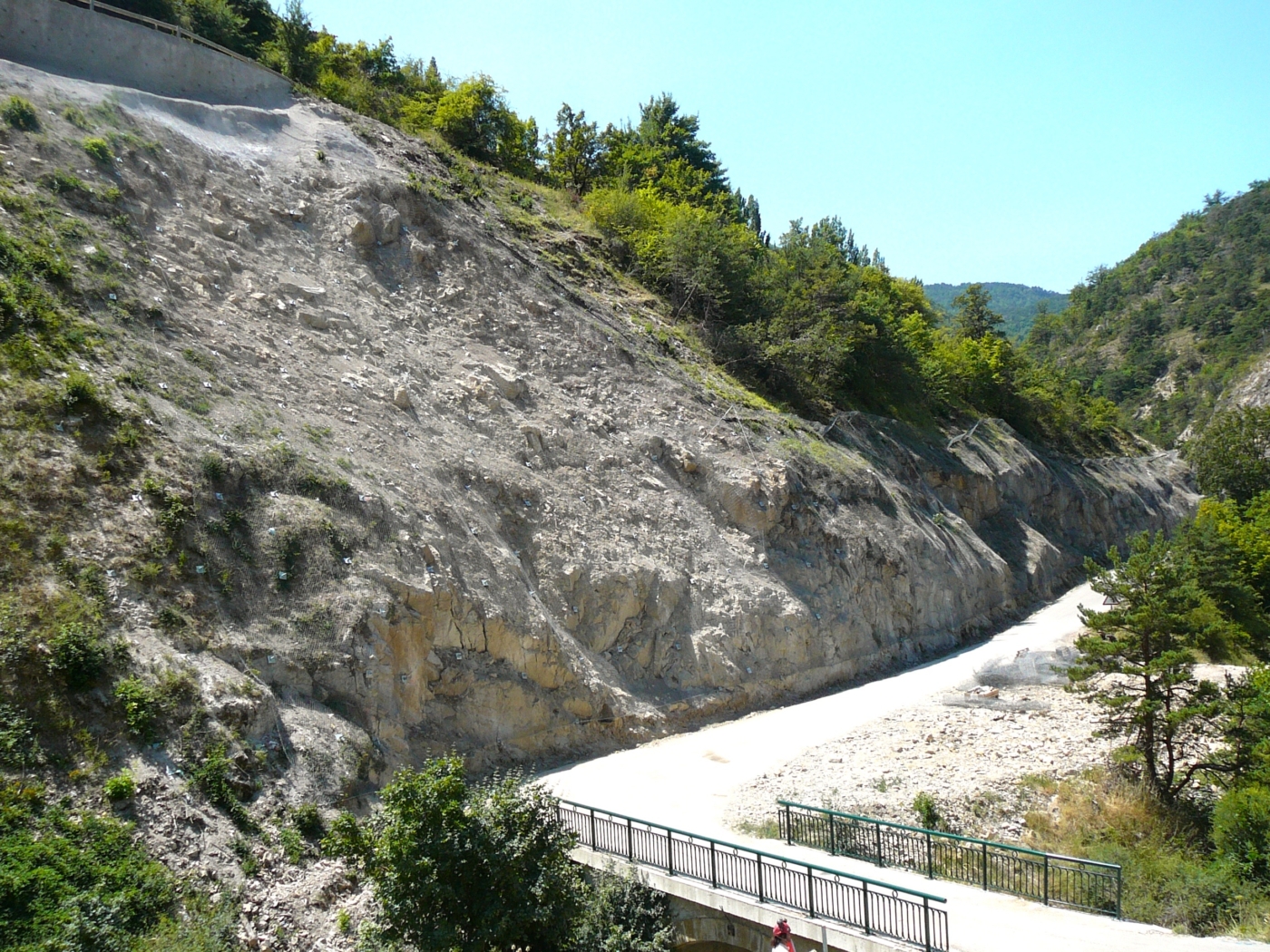

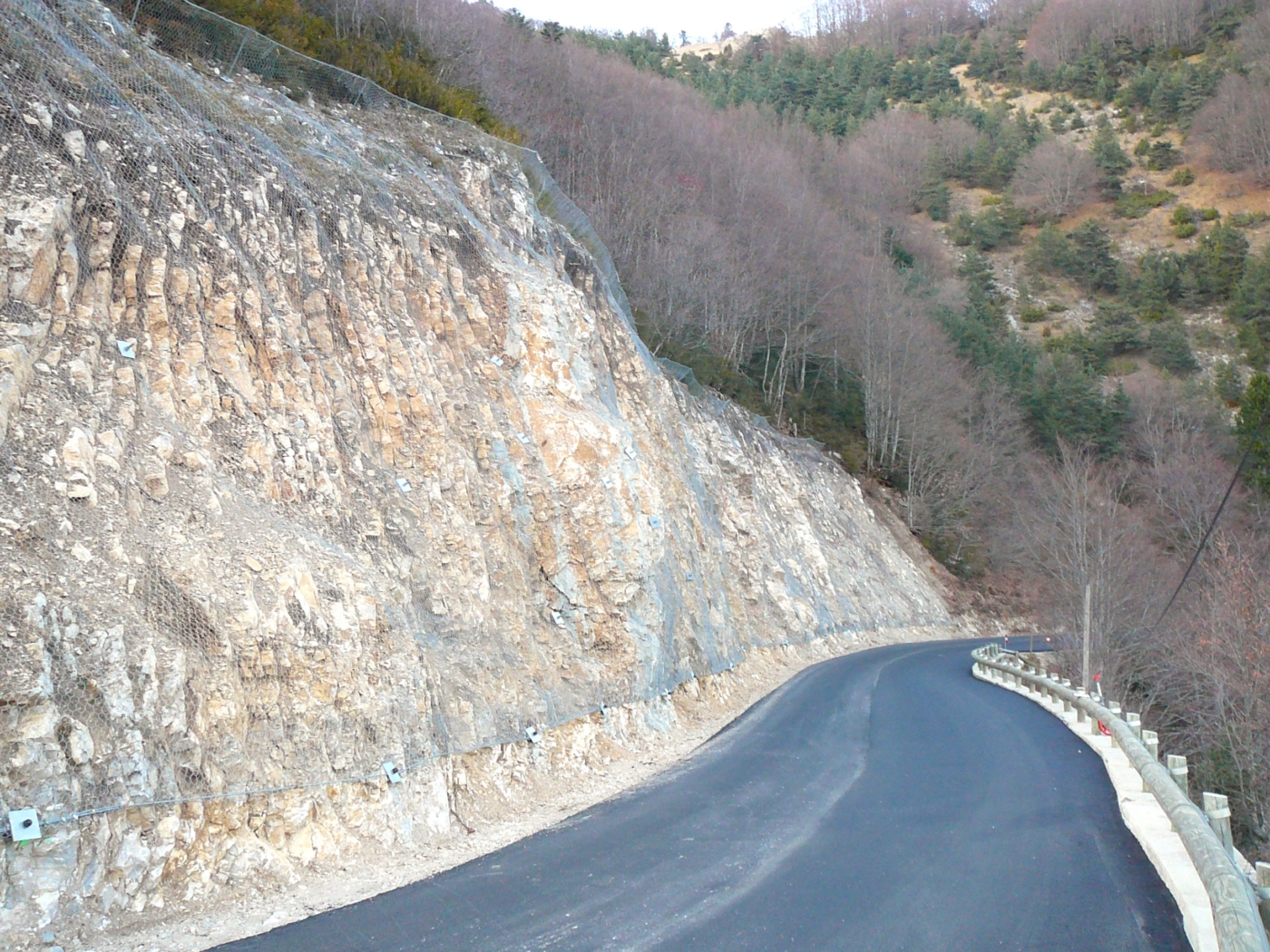
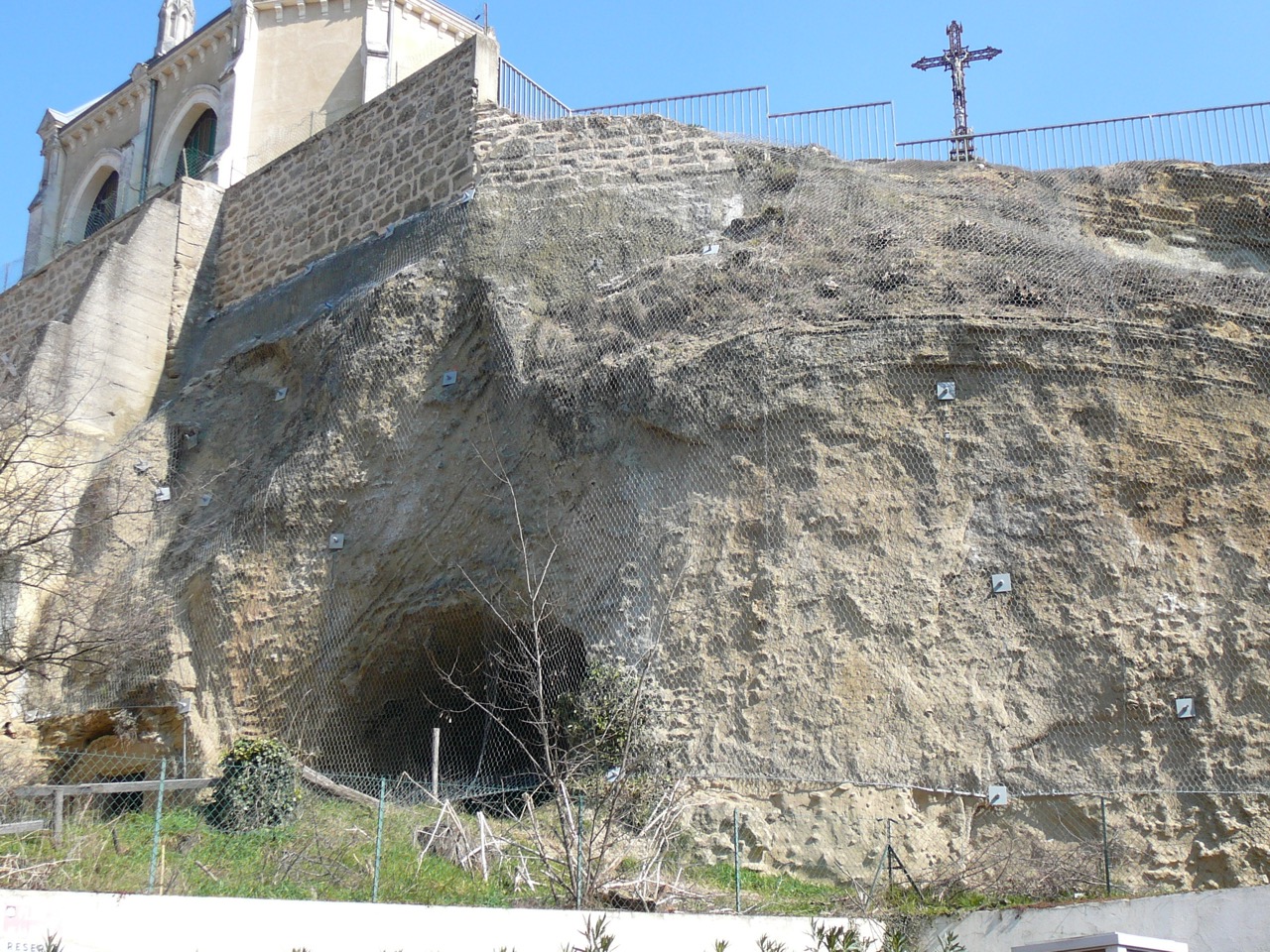
Expert Execution for Optimal Efficiency
The success of a tensioned mesh system relies on the expertise of the teams involved:
- Experienced Technicians and Installers:
Their skill is critical for determining anchor placement and ensuring optimal mesh tension. - Geotechnical Engineers:
They oversee the proper sizing and layout of the anchors to guarantee the stability and longevity of the installation.
A well-installed tensioned mesh minimizes local material build-up (“pockets”), simplifies maintenance, and ensures long-term effectiveness. Conversely, poor design with insufficient anchors compromises its performance, turning it into an inefficient solution similar to draped mesh, while significantly increasing maintenance costs.
Advantages of Tensioned Mesh
- Confinement of Instabilities:
- Rocks and blocks are secured in place, minimizing the risk of detachment and falls.
- Simplified Maintenance:
- Properly tensioned mesh reduces material accumulations, making maintenance operations straightforward and efficient.
- Landscape Integration:
- When carefully installed, tensioned mesh conforms seamlessly to the natural contours of the slope, providing an aesthetic and discreet solution.
- On vegetated slopes, adding a 3D geogrid layer helps to:
- Limit erosion.
- Promote rapid revegetation for a natural visual effect.
Limitations of Tensioned Mesh
- Complementary Reinforcement Needed:
- Blocks exceeding the mesh’s capacity (over 500 liters) must be either purged or stabilized using techniques such as anchors or cable nets.
- Initial Cost and Maintenance:
- Inadequate investment in anchor quantity can lead to high maintenance costs and reduced system efficiency.
When to Use Tensioned Mesh?
Tensioned mesh is ideal for:
- Cliffs and slopes with moderate instabilities.
- Areas requiring aesthetic integration, such as environmentally sensitive or high-visibility sites.
- Projects where durability and ease of maintenance are a priority.
Conclusion
Tensioned mesh is an effective and aesthetic solution for securing cliffs and slopes. When properly designed and installed, it offers durable protection with minimal maintenance requirements.
At Acrobat X, we specialize in delivering tailor-made solutions that ensure safety, durability, and seamless integration with your site’s natural environment.
Contact us for a personalized assessment and expert advice on the best protection system for your needs.


